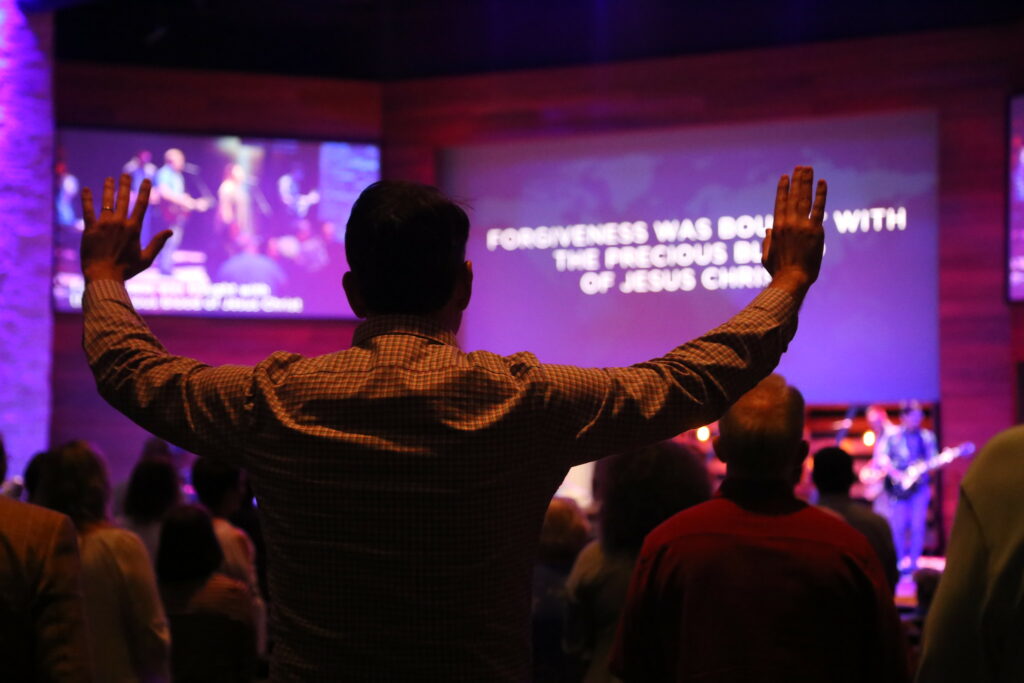After the end of each fiscal year, in January, each local church submits an End of Year Report (local church statistics) to their district, and any remaining apportionments payments are submitted to the district and/or conference on what is traditionally referred to as “Report Day.” The 2024 year-end reporting dates are January 14th and/or 15th, 2025. Please check with your respective district to confirm their scheduled reporting date.
Questions? Contact Rochelle Cebrun:
Protocols for Counting Worship Attendance
Counting attendance measures the health of a congregation. That’s true, but often misunderstood.
Some churches have come to think of the count as a measure of their worth. Even more troubling, many pastors seem to imagine it as a measure of their own individual worth.
Both sorts of thinking stray far from the truth. Worship is one of the practices that we, as United Methodists, believe necessary to fully live out the relationship between God and individuals. If relationship with God means “becoming a disciple of Jesus Christ,” then worship serves as the primary ground on which a curious person, entering the congregation from any one of a number of entry points, may become a committed disciple.
The other means of establishing and strengthening that relationship (prayer, small accountability groups, study of Scripture, works of mercy) are never enough without regular attendance at worship, hearing God’s Word proclaimed and sharing in the Sacraments. By counting attendance, pastors and laity may gain a glimpse at the collective growth of their congregations’ relationship with God. Counting people, like counting the offering, should be joyful, a celebration and a thanksgiving for what God is doing in the lives of those who attend.
Given that, the Texas Annual Conference has decided to establish strongly suggested protocols for counting. Meant to be taken as helpful and in good humor, these primarily apply to the end-of-year statistical reports required of every congregation. We also encourage consistent application to Vital Signs weekly reporting, as well as additional measures developed by individual congregations. We hope that all congregations and pastors will take this and find it useful, even easy to accept and apply. We offer it while also affirming that consistency within each congregation is more important than consistency Conference-wide. We always prioritize the local congregation and place greater weight on developing useful measures in each local church than on the data we receive, though we do put those reports to use in appointment making.
As the Bishop and Cabinet seek to match clergy with local congregations, we ask that, at the very least, local congregations who vary from this protocol, (a) remain consistent in what they do every week; and (b) provide the most honest assessment of the congregation’s health as possible.
Who to Count?
-
THE PEOPLE PRESENT
Count every single human being physically attending a primary worship service.
Every human being includes children in attendance. Primary worship services are those worship opportunities that happen regularly throughout the year, and are comprised of the normal components of worship: gathering (i.e. songs, prayers, and greeting), hearing God’s Word (i.e. Scripture readings and sermon), responding to God’s Word (i.e. offering, Holy Communion, creeds, altar calls) and sending forth (i.e. announcements of service opportunities, benedictions and blessings). -
ONLINE VIEWERS
Count anyone listening online for whom the church has evidence of participation through an online check in process or through analytic software demonstrating that the person viewed the worship for a significant portion of the length.
But, that means someone can go online and then make lunch. Yes, but people in attendance can sit in the pew and balance their checkbook or make grocery lists too.What if our analytic tool doesn’t show the time viewed? Even free tools do that, but really, let’s just admit that this is an honor system. The question to ask is, “what demonstrates that someone is seeking to grow in discipleship?” If you can answer that question, then you can establish whatever criteria you’d like. We recommend conservative and intentional approaches. Don’t just count Facebook views, but allow for some grace.
-
NURSERY WORKERS
Count nursery workers and children in the nursery if they are also listening to the audio feed of worship.
But, the workers will just be distracted with the children. Yes, and so are parents sitting with children in worship. But, babies don’t even understand. You’re right. Neither do they understand what God is doing through them in baptism, but we believe God’s grace is big enough to overcome cognitive disconnects for those immersed in worship. -
DOUBLE ATTENDEES
Count individuals even if they attended an earlier primary worship service and end up counting twice.
But, that’s just inflating numbers! You can certainly look at it that way, but isn’t it possible to attend one service and connect through God in one part, only to attend a second and connect through a different part? Again, let’s assume God can work through different times and media, even if we experience it more than once. Remember what worship attendance is about: growing in discipleship. -
CHILDREN’S CHURCH
Count any youth or children who are in a Children’s worship service. That’s worship.
But, don’t count them in both the regular worship service AND the children’s worship, even if they started in one and left for the other.If they attend two full services, that’s different, but ¼ of time in one service and ¾ of time in the rest, is still only one worship opportunity.
Who NOT to Count?
-
PEOPLE WHO AREN’T THERE
What? That’s obvious. Yes, but we know some churches just add 5% to account for people who stepped out for the bathroom. Seriously? Five percent don’t go to the restroom all at once, even if you serve free Starbucks. See the section on “When to Count,” for more.
Worship attendance data is less than helpful when it’s been fabricated. This can be especially traumatic when pastors move, and new pastors develop expectations based on reported data. -
SPECIAL EVENTS
People, of any age, who attend special worship services or non-worship events.
Remember the definition of “primary worship service.” The service must be regularly occurring throughout the year and consist of the four main parts of worship.What about Maundy Thursday and Good Friday? Those are certainly worship opportunities, but they aren’t throughout the year. They are “special services.”
What about Christmas Eve? Look. We get it. High Holy days are really important worship opportunities. And, we can even understand counting Christmas Eve, but if you do that, you need to increase the number of weeks by which you divide to get the average. That said, ask yourself, does a big service on Christmas Eve or rolling Maundy Thursday into Easter Sunday attendance give anyone an accurate picture of the worship attendance in that local congregation? In fact, we have all complained at one time or another about C&E Christians. The most honest approach to counting probably has you exclude any Holy day that doesn’t occur on a Sunday (or during a regularly scheduled service).
We lead worship in a nursing home every week, does that count? If you do it every week and you have all four parts of worship, then that sounds like a primary service to us.
We have Wednesday night worship for those who work on Sundays, how about that? Again, if it’s regularly conducted throughout the year, that sounds like it should be counted.
We have a fellowship dinner on Wednesday night and a program for the kids. Shouldn’t we count that? Seriously? Meals might be holy, but they aren’t necessarily worship services.
-
MINGLERS
People who are present, but in the donut area, Sunday School classrooms or hallways gossiping, including nursery workers when the audio isn't on in the room.
Again, counting attendance is about measuring the health of a congregation’s discipleship.If a congregation has a large number of people who don’t actually participate in worship, and favor conversations or donuts, that would seem to say something about the discipleship health.
When to Count?
During primary worship services, we think it’s best to count right as the sermon begins. That will give you the best sense of who’s really in attendance. Counting too early will almost certainly mean missing some folks who come late. Counting at the end will miss those who pursue the Baptists and the Buffet. The majority of people get settled and are present for the sermon. That seems like a good time.
For online worship, we again suggest using a time analytic or having people somehow “check in.” We know of one congregation that uses Facebook views, but only counts 7 percent of them. They used polling to determine that only 7 percent who view actually end up participating in the whole service. Just be intentional in creating a standard.
What if it snows? What if there’s ice all over the roads? What about hurricane evacuations? If it snows or if there’s ice everywhere, or if there’s a hurricane evacuation and you have a grossly lower attendance or cancelled service, let’s just set the rule: (a) don’t take a count and (b) reduce the number of Sundays by which you are going to divide in order to obtain the average. That won’t help your average if it happens on Palm Sunday (as it has before), but it won’t devastate your average with a 0. Any kid in school knows that a 0 can really wreck an average.
If you have any questions about these fun guidelines, please contact your District Superintendent. A special thanks to the Texas Annual Conference for their publication on worship counting protocols.


